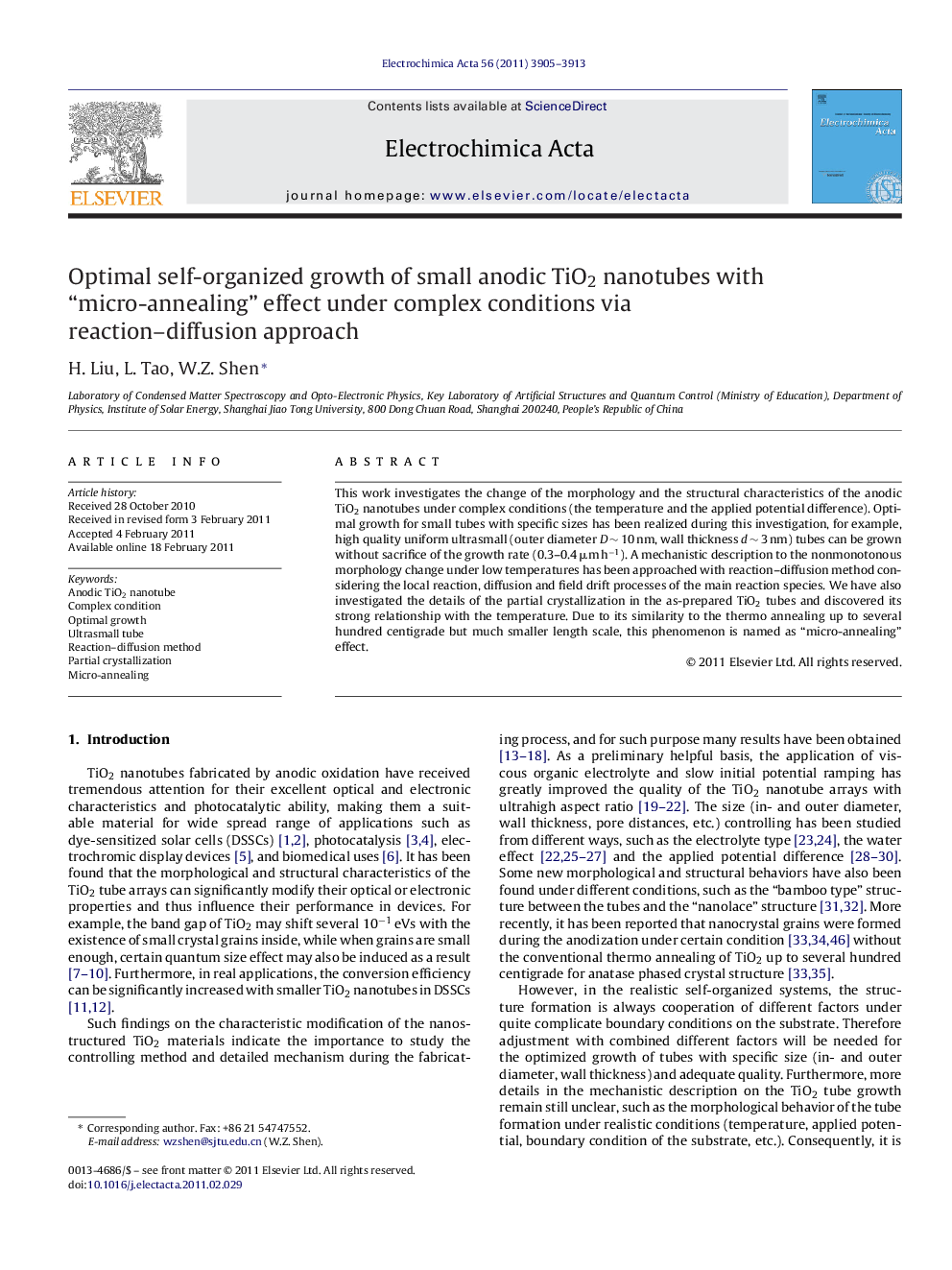| Article ID | Journal | Published Year | Pages | File Type |
|---|---|---|---|---|
| 190242 | Electrochimica Acta | 2011 | 9 Pages |
This work investigates the change of the morphology and the structural characteristics of the anodic TiO2 nanotubes under complex conditions (the temperature and the applied potential difference). Optimal growth for small tubes with specific sizes has been realized during this investigation, for example, high quality uniform ultrasmall (outer diameter D ∼ 10 nm, wall thickness d ∼ 3 nm) tubes can be grown without sacrifice of the growth rate (0.3–0.4 μm h−1). A mechanistic description to the nonmonotonous morphology change under low temperatures has been approached with reaction–diffusion method considering the local reaction, diffusion and field drift processes of the main reaction species. We have also investigated the details of the partial crystallization in the as-prepared TiO2 tubes and discovered its strong relationship with the temperature. Due to its similarity to the thermo annealing up to several hundred centigrade but much smaller length scale, this phenomenon is named as “micro-annealing” effect.
Research highlights► Nonmonotonous size evolution of anodic TiO2 tubes under low temperatures. ► New approach to a general mechanism of the size evolution. ► Formation of nanocrystal TiO2 in the anodic tubes by temperature controlling. ► High speed growth of small sized TiO2 tubes with better structural ordering.
